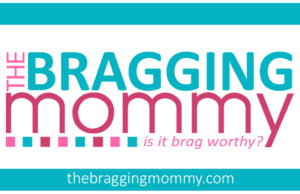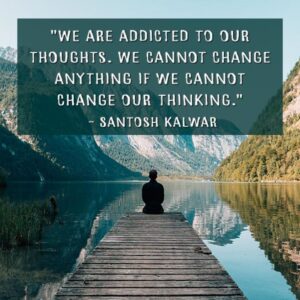
Creating a comfortable living space goes beyond appealing decor or furniture arrangement. The human brain responds to environments through psychological cues tied to emotional security, cognitive ease, and sensory engagement. A home serves as a psychological anchor, reflecting identity and supporting personal well-being.
Understanding these dynamics reveals why some spaces feel like home while others, despite their style, do not.
The Power of Private Retreats: Why Bathrooms Matter More Than Assumed
Among the most overlooked yet deeply personal areas in a home is the bathroom. This space, often limited in size but heavy in psychological impact, serves not just utilitarian needs but also plays a vital role in emotional regulation and stress relief. It is often the first room entered at the start of the day and the last before bed, anchoring daily routines that influence mood and mental clarity.
Psychologically, bathrooms serve as private retreats—places where individuals can temporarily disconnect from external demands. The sensation of running water, the tactile comfort of warm towels, and even the acoustic-dampening qualities of tiled walls contribute to a sense of solitude and introspection. A well-designed bathroom encourages relaxation and can reduce anxiety, providing a temporary escape from overstimulation or chaos in other parts of the home.
This is why upgrades to bathroom spaces have seen increasing emphasis in home improvement trends. When done with care, even simple changes like enhanced lighting, ergonomic fixtures, or improved ventilation can shift the emotional tone of the entire home. Larger projects like replacing an outdated shower with something more functional and aesthetically pleasing can also yield profound effects.
For homeowners seeking transformative upgrades, hiring the best shower replacement company in your area ensures both function and form are optimized, aligning the space with psychological needs for calm, order, and privacy.
Spatial Flow and Cognitive Ease
One of the fundamental aspects of a comfortable home lies in how space flows. Spatial flow refers to the way rooms connect with one another and how movement through the space feels—whether it’s intuitive or awkward. Homes with open layouts, clear pathways, and minimal visual clutter promote what psychologists refer to as cognitive ease. This state allows the brain to process the environment effortlessly, reducing the mental load associated with navigating disorganized or cramped areas.
When spatial planning is intuitive, people feel in control of their environment. This sense of control directly correlates with feelings of safety and satisfaction. On the other hand, chaotic layouts or obstructive furniture arrangements can lead to subtle but persistent stress responses, diminishing a person’s overall comfort.
Color Psychology and Emotional Resonance
Color has long been known to influence psychological states. Cool tones like soft blues and greens are associated with calmness and clarity, while warm hues like terracotta and beige evoke feelings of coziness and connection. In a living space, the right color palette can help achieve an emotional resonance that complements the intended use of the area. For example, using muted tones in a bedroom promotes relaxation, while livelier shades in a kitchen may foster energy and sociability.
However, personal preference also plays a significant role. A color that soothes one person might irritate another based on cultural background, past experiences, or individual sensitivities.
Lighting and Circadian Harmony
Lighting—both natural and artificial—profoundly affects mood, energy levels, and overall psychological comfort. Natural light boosts serotonin levels, enhances focus, and contributes to better sleep-wake cycles. Homes that prioritize daylight access through large windows or skylights tend to feel more vibrant and alive. These elements align with circadian rhythms, the internal biological clock that regulates sleep, alertness, and hormonal balance.
Artificial lighting, when improperly applied, can disrupt this harmony. Overhead fluorescent lighting or harsh white LEDs may contribute to anxiety, eye strain, and sleep disturbances.
Texture and Sensory Balance
While visual aesthetics are often prioritized, the role of texture in psychological comfort is equally vital. The sensation of materials—whether soft, rough, warm, or cold—communicates directly with the nervous system. Natural materials such as wood, cotton, and stone evoke a grounded, organic feel, promoting tranquility and stability. Contrastingly, synthetic or overly glossy surfaces may introduce a sense of detachment or artificiality.
Incorporating a balanced mix of textures within a space can provide sensory richness without overwhelming the senses. For instance, a room with plush rugs, linen curtains, and wooden furniture offers tactile diversity that soothes rather than overstimulates.
Personalization and Identity Expression
Comfort also stems from an environment’s ability to reflect one’s identity. Personalization through photos, books, artwork, and meaningful objects transforms a generic house into a home. These elements act as visual narratives of the self, reinforcing a sense of belonging and continuity. In psychological terms, such personalization fosters a strong place attachment, which is closely tied to emotional stability and life satisfaction.
However, personalization must be intentional rather than excessive. Over-cluttering a space with sentimental items can ironically reduce comfort by creating visual chaos. The goal is to strike a harmony between meaningful expression and organized simplicity.
Acoustic Environment and Mental Clarity
Sound plays an often underestimated role in how comfortable a space feels. Constant background noise—whether from traffic, appliances, or electronics—can gradually increase stress levels and disrupt focus. Comfortable living environments are acoustically balanced, minimizing intrusive sounds while allowing soothing ambient noises to prevail.
This doesn’t necessarily mean complete silence. Gentle background sounds such as rustling leaves, flowing water, or quiet instrumental music can enhance calmness and mental clarity.
The Role of Cleanliness and Order
A clean and orderly environment has a direct impact on mental well-being. Cluttered or dirty spaces can lead to cognitive overload, irritability, and decreased productivity. On the other hand, tidy and well-maintained surroundings signal safety, discipline, and self-care. This psychological response is deeply rooted in evolutionary instincts, where organized environments often indicate control over one’s surroundings.
Implementing simple habits like regular decluttering, hidden storage solutions, and daily tidying rituals can maintain this sense of order. When everything has a designated place and visual distractions are minimized, the mind can rest more easily.
Comfortable living spaces are not accidental outcomes of design trends—they are intentional environments crafted with deep psychological understanding. From the strategic flow of rooms to the textures underfoot, every detail contributes to emotional and cognitive well-being. When homes align with the brain’s need for safety, clarity, and identity, they become sanctuaries that nurture rather than drain.


